17. Applications and implications¶
This week I had to propose a final project masterpiece that integrates the range of units covered.
To do that, I answered the following questions:
What will it do?¶
Siena is well known for an historical horse race that takes place twice a year, known as the Palio di Siena.

Everything in Siena is based on these races and the culture and tradition behind them. The whole city is divided in 17 districts also known as Contrade.
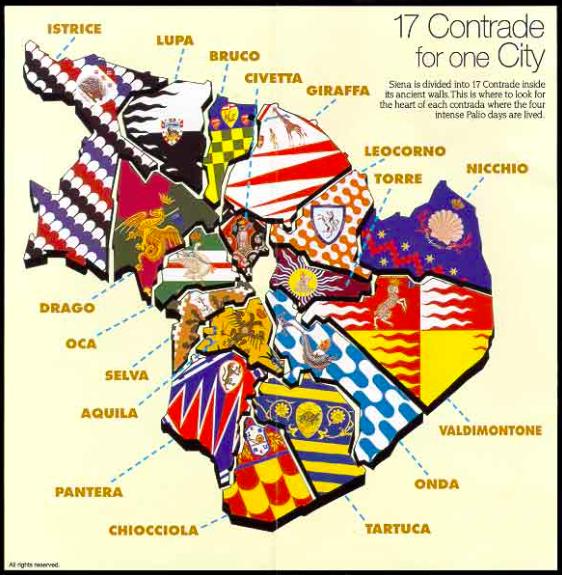

Every child born and raised in Siena has played with la pista dei Barberi, which is a marble track that emulates the real horse race.


Instead of running with jockeys and horses, these marble tracks use tiny wood balls, known as Barberi with the Contrada’s colors, so that children can see their Contrada compete against each other.
The Palio lasts three laps and so the marble track has a structure that tries to reply the laps. The race starts on top, then all the marbles race down to the bottom.
The last section of the track gets narrower so that there can only be a winner. And that’s it, this is how a traditional Pista dei Barberi works.
Marbles go back and forth only if children grab them and place them back at the starting line, ready to race again.
This is how it worked, until today.
My Pista dei Barberi will automatically bring back the marbles to the top. When they reach the finish line all the marbles are going to be held in place by an automatic gate moved by a servomotor.
While the marbles are steady, the first marble will be identified and the result is going to be displayed on a LCD screen. All the marbles are going to be recognized by their colors. All of them will be hand-painted and will have two colors each. At the bottom there is going to be a infrared sensor that tells the color sensors to start scanning.
When the winner has been identified by the system, the automatic gate at the bottom opens and lets all the marbles roll to the center of the structure through a tunnel.
The tunnel leads to the central section of the Pista dei Barberi, where there is going to be an Archimedes’ screw that brings the marbles all the way back to the top thanks to a DC motor with reductions.
At the top of the track there will be another automatic gate, also moved by a servomotor. that will open after a certain amount of time (yet to be determined) so that all the marbles will be back on top of the screw section.
Who has done what beforehand?¶
In Siena’s gardens there are few tracks made by artists through the decades. Some tracks are made of marble, other of stone and other of copper and metal.
They differ in shape and size but they do all have the same structure. All the marbles do not automatically go back to the top.
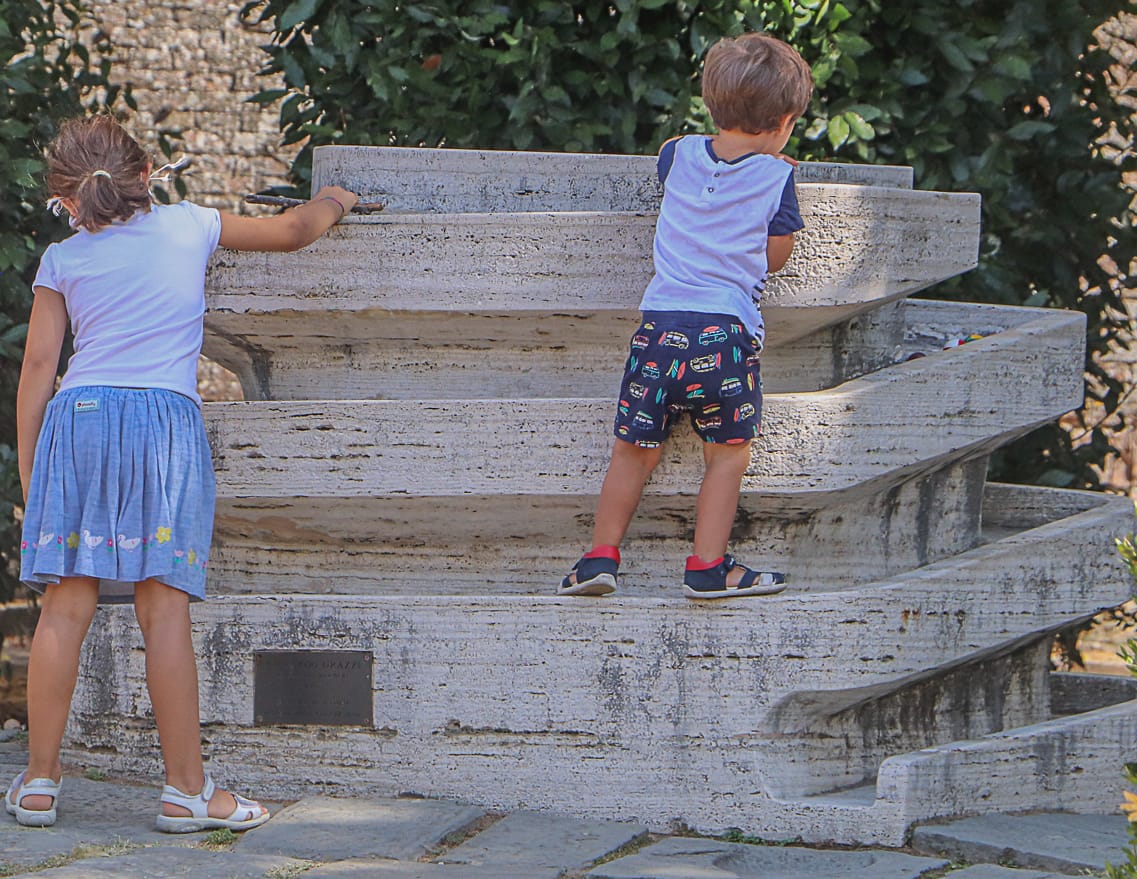
Every Contrada has its own Pista dei Barberi, some of them are made of plastic, some are made of wood, but they all come in multiple pieces that need to be assembled.
The important fact is that none of the existing Pista dei Barberi have an automatic ascending screw or fully automatic gates.
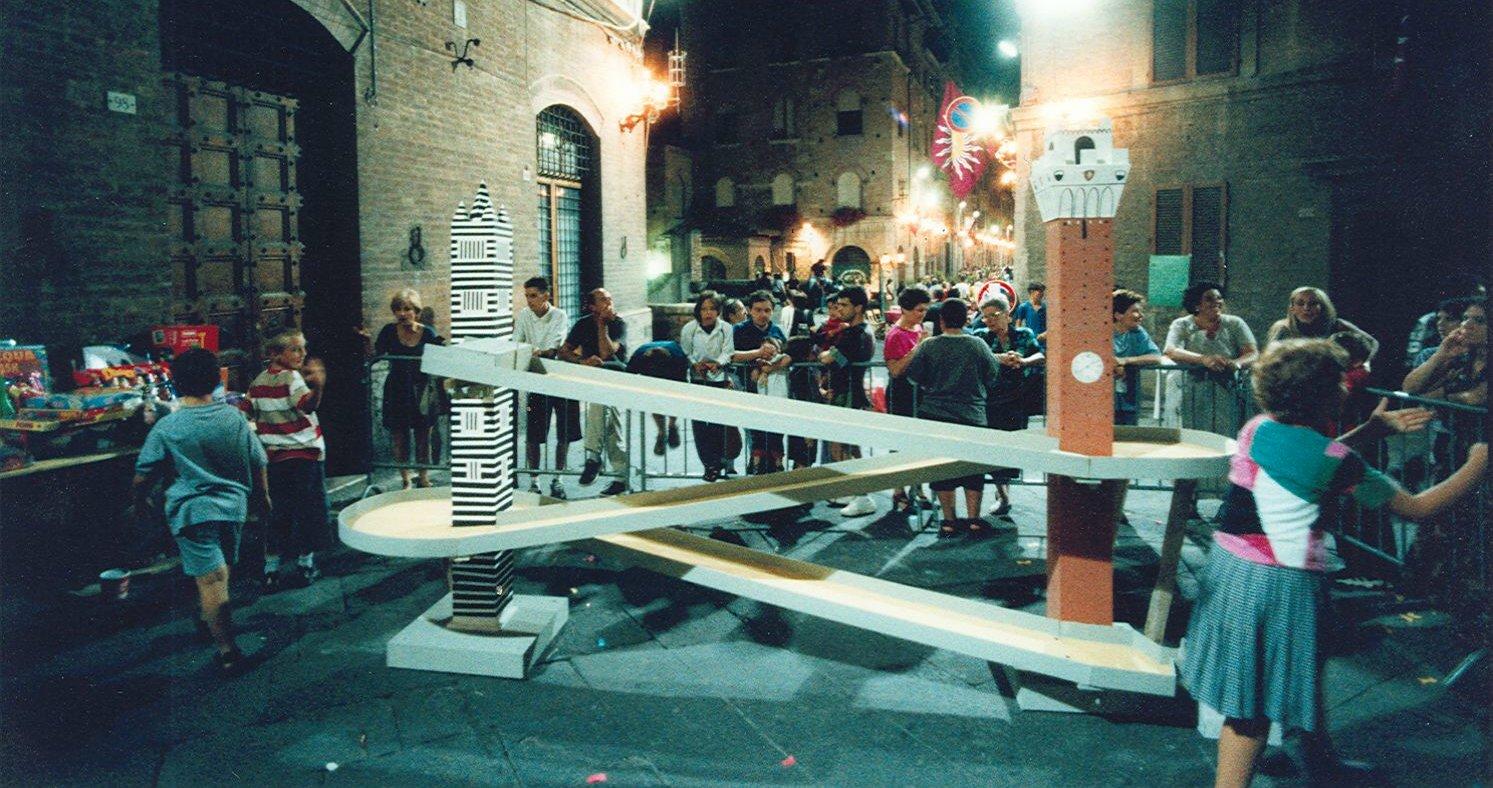
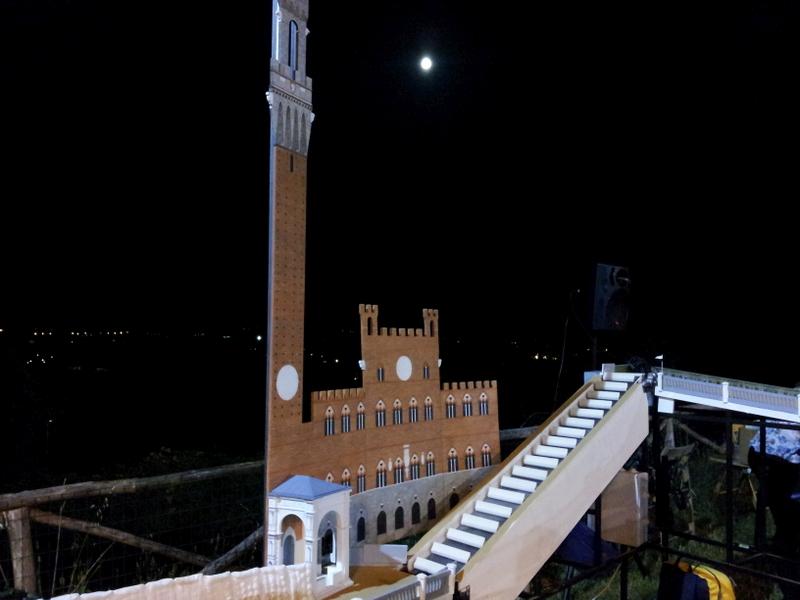
What will you design?¶
I am going to design almost everything. The track is going to be fully designed by me. My intention is to obtain a octagonal structure completely made of wood. The octagon’s height will be around half meter, its width is going to be around 60 centimeters. This structure should allow me to make the track less steep as possible.

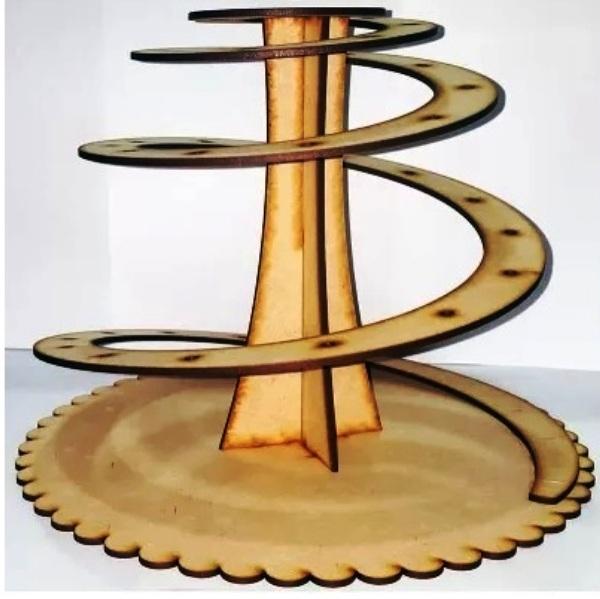
I will paint my wooden marbles, so that the color sensors can recognize the contrade.
The Archimedes’ screw is going to be printed as well as the gates connected to the servomotors.
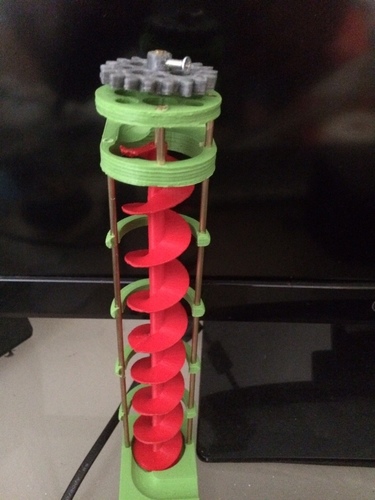
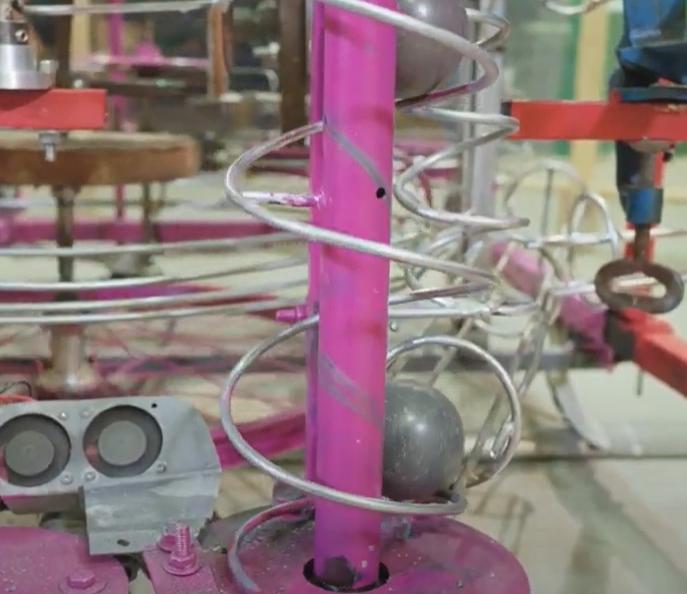
The boards will be designed too.
What materials and components will be used?¶
The track is going to be made of wood and once the structure is settled, it will be reinforced with epoxy where needed. In order to prevent the marbles from falling off the track, I will use something to create a border. One option could be using some rope, hardening it with epoxy. The other option could be using brass sticks.
Where will they come from?¶
The materials I need will all come from the Lab or from the local hardware store. Most of the things will be made by myself but especially the electronics parts cannot be obtained without buying them.
how much will they cost?
- €25 Electronics
- €15 Epoxy
- €35 Wood
- €10 3D filament
- €15 miscellaneous (brass tube or rope for track borders, plastic pipe)
What parts and systems will be made?¶
I am making almost everything: The screw section will be made by myself, so as the whole track and its finish line. There is going to be a tunnel that leads to the central section, so I am going to make that too.
What processes will be used?¶
- Track > subtractive - laser cutter
- Gates and functional elements > addictive - 3D printing
- Epoxy > postprocessing
- Boards, input and output sensors > embedded programming
What questions need to be answered?¶
I have some doubts about the project and only the trial and error approach is going to help me:
- Is it possible to obtain a smooth track without steep slopes or corners ?
- The Archimedes’ screw is going to work? Maybe I should check alternative ways of ascension (bucket elevator or regular elevator, it is all a matter of speed).
- Will it be possible to obtain a working color scanner with 17 unique color combinations?
How will it be evaluated?¶
It has to be tried the whole track. There are some degrees of success:
- The marbles go down.
- The gate is closed and the scanner identifies the winner, writing on the LCD display.
- The gate opens and the marbles reach the central section.
- The Archimedes’ screw works properly.
- The RFID on top identifies all the marbles.
- The gate on top moves and lets the marbles roll down again.
This is the end of the documentation.